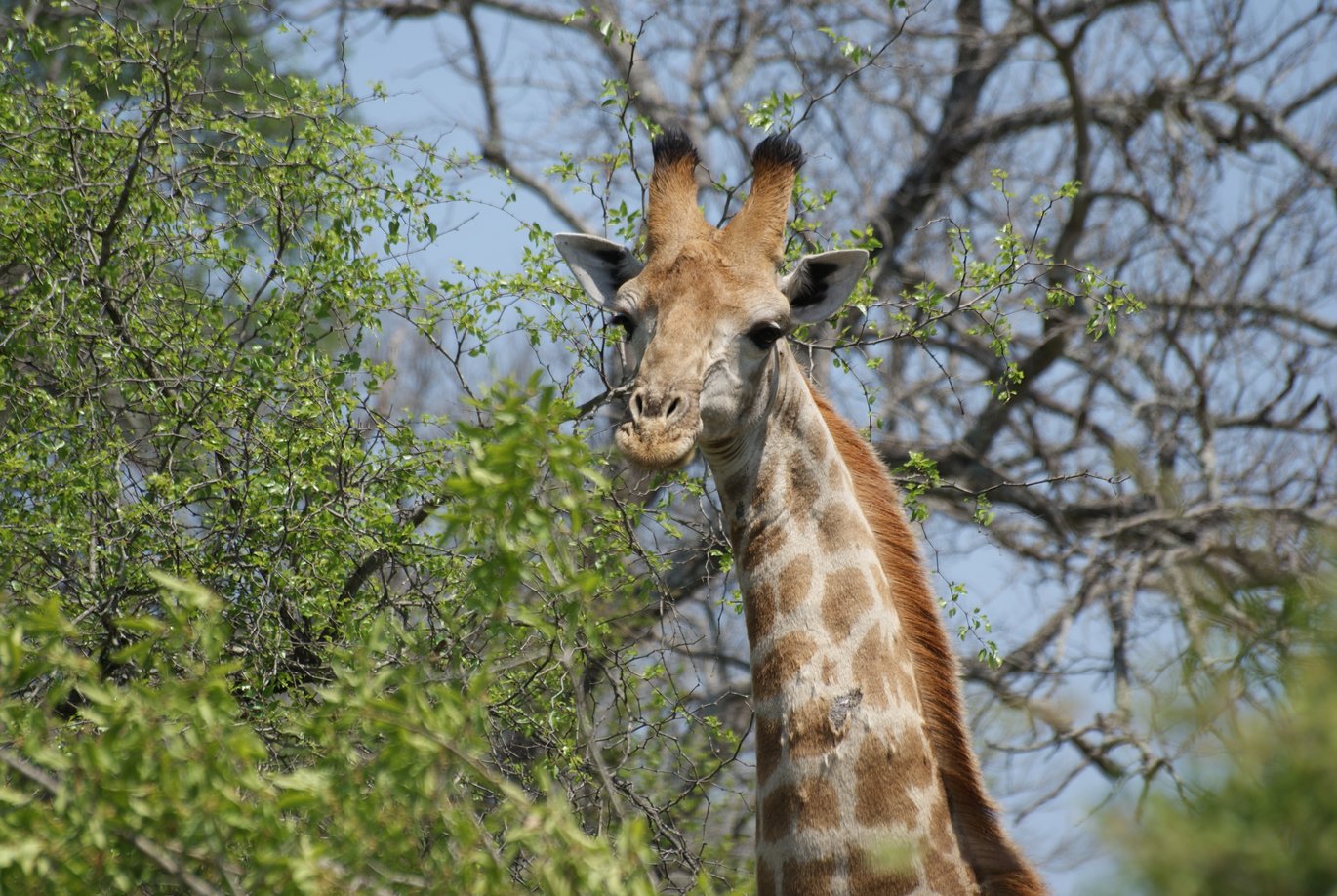New Nordic cuisine for giraffes
The feeding of giraffes in zoos is more often than not based on trial and error and experience rather than on scientific evidence of what is healthiest for the giraffes.

What do you offer a giraffe at the zoo if its meal is to be both healthy and appetitizing? This is what scientists at Aarhus University are looking into i ncollaboration with Copenhagen Zoo.
On the savannah in Africa giraffes prefer to munch the tender leaves of acacia trees. In Denmark we do not have the climate to offer acacia trees and neither can we offer fresh green leaves in the winter from any kind of tree.
- The quantities that a giraffe weighing 1200 kg eats are so large that you have to find diet items that not only are healthy and appetizing for the giraffe, but also easy for the animal keepers to handle, says PhD student Cathrine Dyhr Sauer from Aarhus University, who will be looking into the prospects of finding new suitable plant material to feed the giraffes.
A giraffe is not a cow
Giraffes are ruminants just like cows, sheep and goats. In captivity they are typically fed alfalfa hay and various kinds of feed pellets with possibly a supplement of fruit and vegetables.
- There is no golden standard of how to feed a giraffe. In most institutions they are fed what the animal keeper has the best experience with. The suitable diet would be one containing a large quantity of leaves, so that it more closely resembles what they eat in the wild - because a giraffe is not a cow, says Cathrine Dyhr Sauer.
To obtain more concrete knowledge, she has performed autopsies of giraffes in South Africa. The animals had been put down in connection with a different project at Aarhus University on blood pressure. The hypothesis is that the rumen of the giraffes is relatively smaller than the rumen of cows and that the muscular structure of the rumen is weaker.
- The belief is that the rumen in the giraffe has adapted to the easier and more rapid digestion of leaves than grass. Leaves do not need as much time in the rumen as grass so this stomach compartment is not as large in a giraffe as in a cow, says Cathrine Dyhr Sauer.
Elongated fibres, such as grass straw, would end up at the top of the rumen like a mat and would therefore stratify the rumen content as is known from cows. The alleged weaker muscles of the giraffe rumen may not be able to mix the content as effectively as a cow, and therefore it is not able to digest the grass as well as a cow.
- Giraffes in captivity can suffer from various feeding-related disorders and we would like to try and avoid this by identifying suitable feeding materials for the animals, says Cathrine Dyhr Sauer.
Leftovers from another study
In the spirit of the New Nordic Kitchen, the giraffes in the project are offered a wide variety of fine, fresh Danish products. And in the ‘no-waste’ spirit of the time, some of the ingredients are leftovers from another study at Aarhus University with different mixtures of herbs in the grass for cows on pasture (read more about the study here).
Cathrine Dyhr Sauer has selected plants with a relatively large leaf area, so the giraffes will be offered silage made from, respectively, chicory, red clover, cumin, and alfalfa.
There will be an initial pilot study to ascertain if the giraffes will eat any of the new feeds. The feeds that they like the best will be part of a larger investigation that will look at feed intake, digestibility, and rate of passage of the different types of silage.
Which giraffes will be chosen for the project has not yet been decided, but Copenhagen Zoo, Odense Zoo and Givskud Zoo have all shown an interest in participating in the project.
Further information: PhD student Cathrine Dyhr Sauer, Department of Animal Science, email: cathrine.dyhrsauer@agrsci.dk, telephone: +45 6171 6000
Text: Janne Hansen
